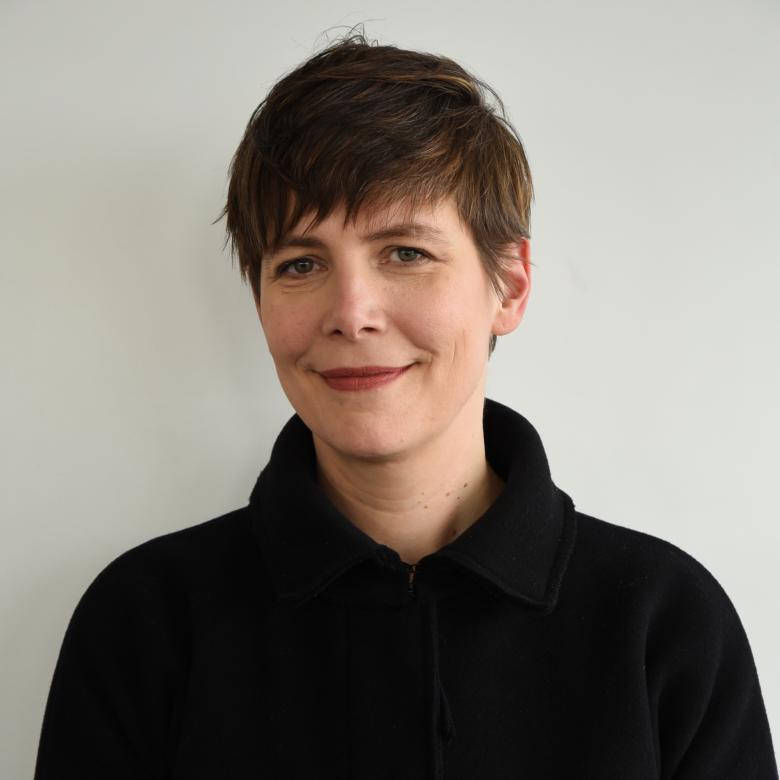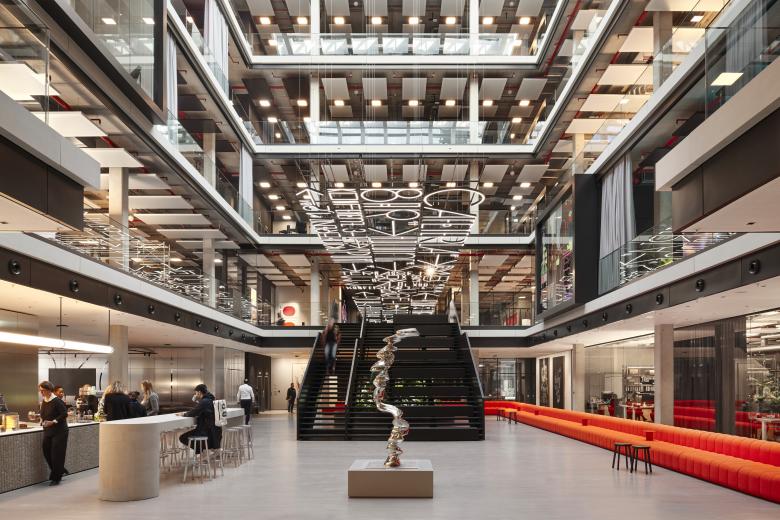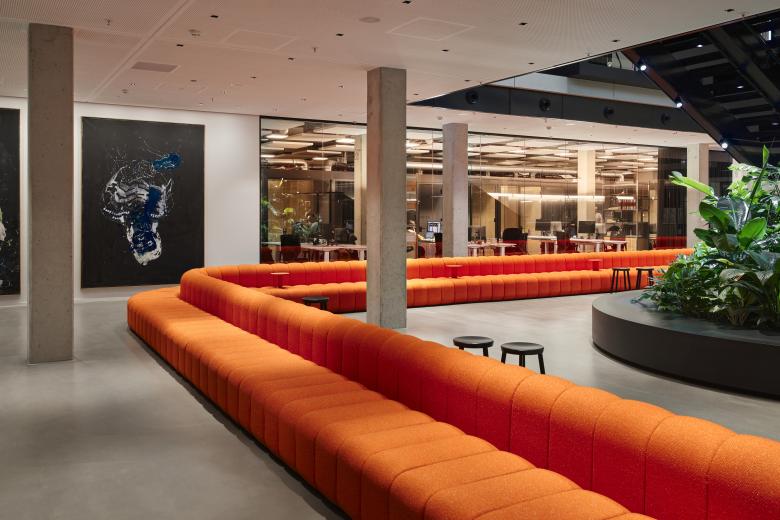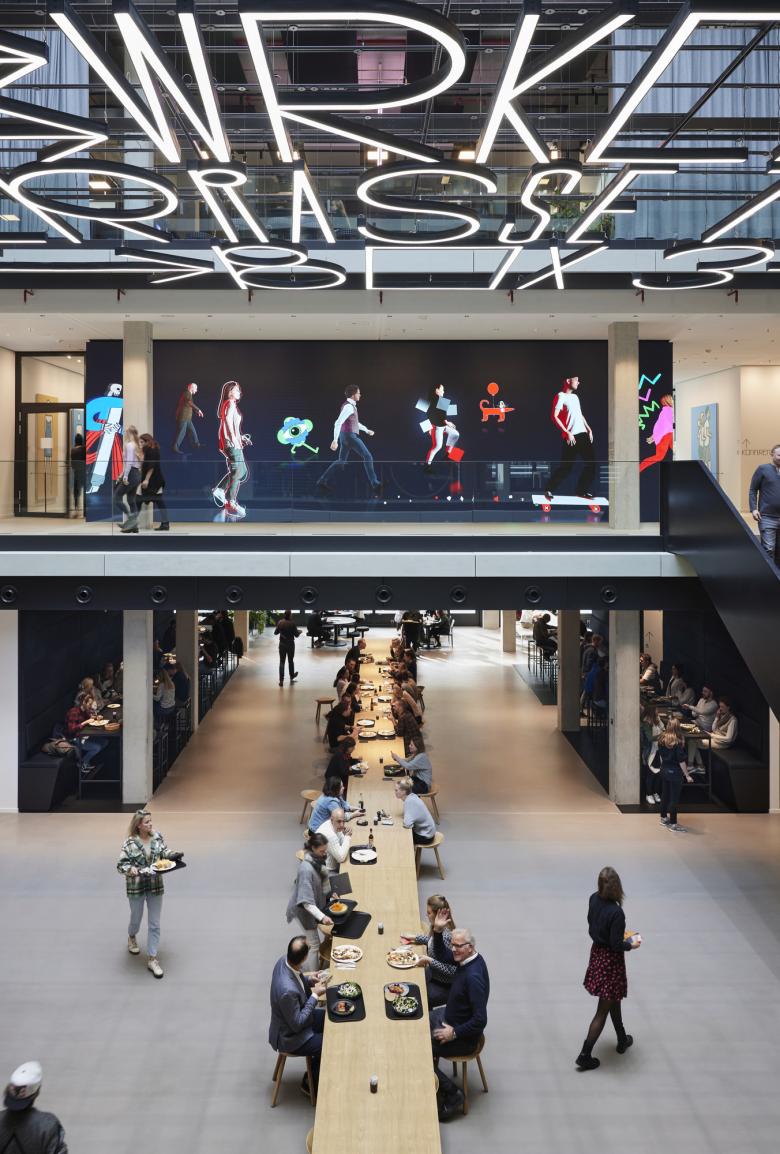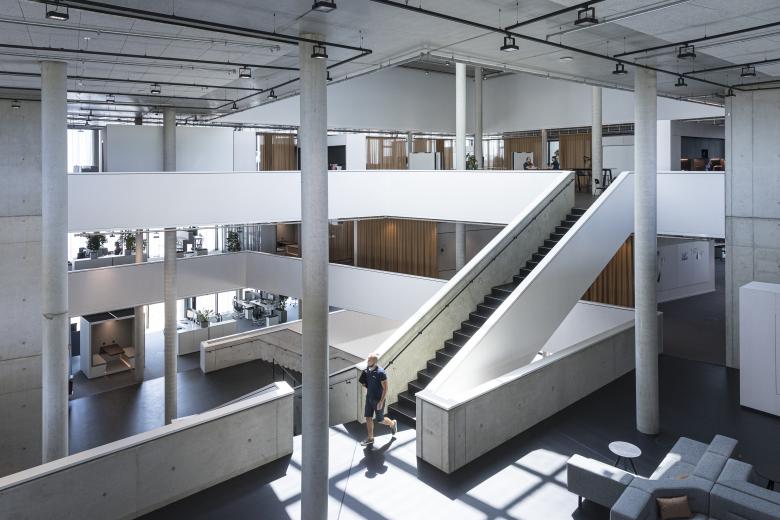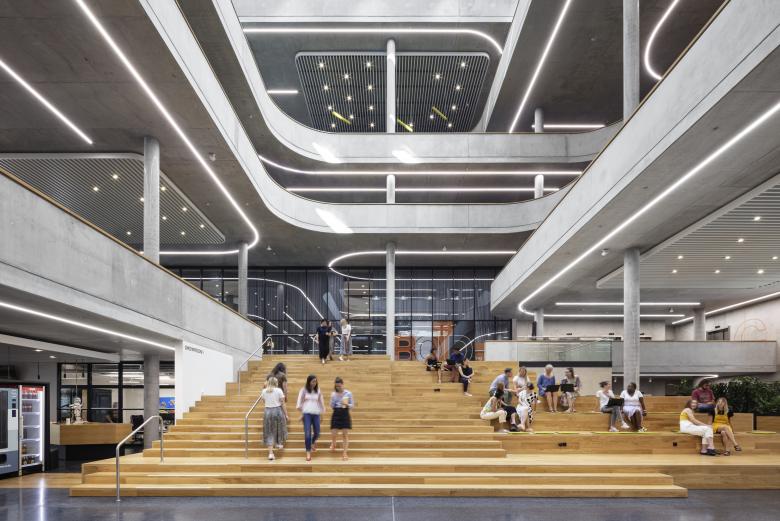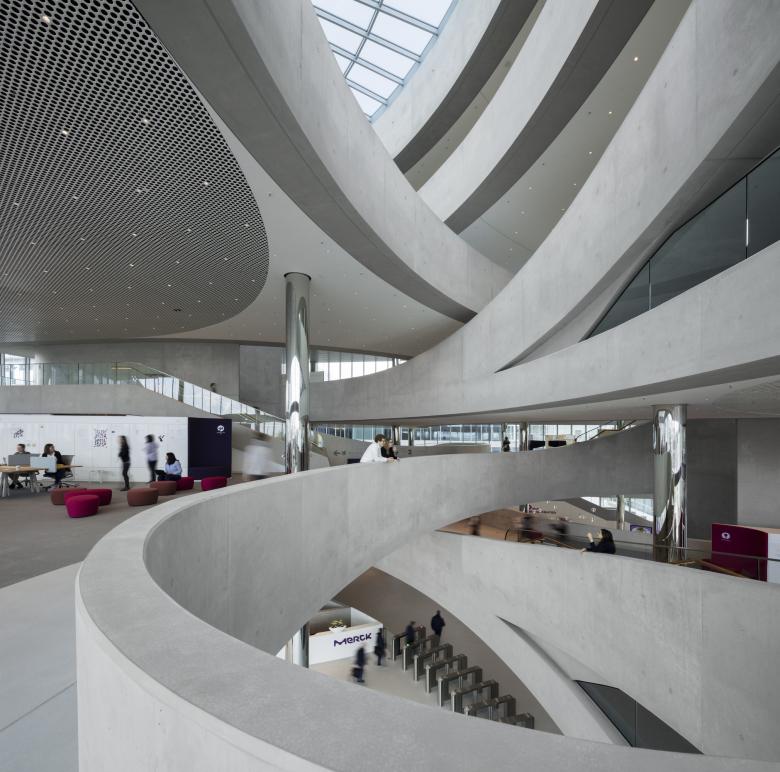Katrin Jacobs: "Which working environment makes us feel most comfortable also depends on our personal preferences"
Thomas Geuder
9. 十一月 2023
Katrin Jacobs (Photo © HENN )
Acoustics, lighting, and indoor climate are important factors in office planning, says Katrin Jacobs from the architectural firm HENN. However, the well-being of the people who will use the spaces always takes center stage in any room planning. That's why a detailed analysis in the preliminary stages is always a necessary foundation for the specific design planning. An interview about visual identity and the concept of communication and integration.
Thomas Geuder: Mrs. Jacobs, design has always been a reflection of society and its time. This applies even more to the office, where many people spend a significant part of their lives. From individual offices to open-plan offices and agile working, through to home offices—where do you think we are in the development of the office at the moment, especially considering the current transformations?Katrin Jacobs: Since the pandemic, remote work has firmly established itself in many industries. Companies are wondering how to create incentives for employees to return to the office—because the physical office is still an important meeting place for creative collaboration and interaction. From our perspective, the potential lies especially in the social dimension. Instead of organizing offices around hierarchies as before, we are now designing open working concepts that are highly communicative and flexible. Above all, the undefined space between workstations and meeting rooms, the so-called "third space", is crucial. It promotes unplanned encounters and allows employees to network better with each other.
House of Communication, Munich, 2022, Serviceplan Group (Photo: Mark Seelen | Seelen⁺)
HENN has been designing and constructing buildings since 1947. An important foundation for this has been an interdisciplinary approach that includes, for example, digital technologies and sustainability strategies. The result is often clean, sometimes techno-inspired forms and spaces with a distinctive material vocabulary. What design principles are applied to create these architectures and designs at HENN?There is no fixed design catalog at HENN. In the design process, we ask ourselves how we can best translate the corporate values into spaces. In the end, an individual design emerges that was developed from the objectives and tailored to the specific requirements of the client. It can be round, square, open, or closed.
House of Communication, Munich, 2022, Serviceplan Group (Photo: Mark Seelen | Seelen⁺)
House of Communication, Munich, 2022, Serviceplan Group (Photo: Mark Seelen | Seelen⁺)
Ideally, buildings are custom-made structures, tailored to the needs of the client. With a certain design objectivity, efforts are made to create results that are as timeless as possible and can be used and repurposed in the future. All of this requires a certain foresight when planning in the present. In terms of offices: what process does a project go through in the design phase at HENN in order to pinpoint the individual needs of the client and integrate them into a general understanding of design?Before a concrete design is created, we start with analyzing the task, the so-called programming. In joint workshops and interviews with the client, we immerse ourselves in the respective corporate culture and collaboratively and thoroughly develop the needs and aims of the users. From this, we develop a guiding principle that serves as our basis for the design.
For the House of Communication in Munich, for example, the goal was to create a unifying visual identity for the Serviceplan Group, which consists of around 40 agencies. The idea of communication and integration also assumes a functional dimension in the form of oversized pieces of furniture, which were custom-made as modified individual pieces. For example, a 30-meter-long, bright red sofa in the entrance area can accommodate 100 people simultaneously, and 80 people can sit at the long wooden table in the cafeteria.
Baramundi SoftwareFactory, Augsburg, 2022, Wittenstein Immobilien GmbH (Photo: Laurian Ghinitoiu)
Thanks to digitalization, work in the office today is fundamentally different from the way people worked in the 1980s. The next big step is already on the horizon, namely working with artificial intelligence. To what extent is all of this already influencing your design work today—and in which areas perhaps not?We are currently experimenting with various AI tools to find out what processes the technology can support us with. In the early phase of a design process, AI can, for example, serve as a source of inspiration and expand the solution space. However, what AI has not yet been able to do is abstract the results and bring them together into one solution. Currently, we see more potential regarding automated, plannable activities, such as highly complex construction processes during execution or optimizing buildings in terms of sustainability.
Zalando Headquarters, Berlin, 2019, Zalando SE (Photo: HGEsch)
The relationship between humans and space plays a central role in the development of interior designs, as you write on your website, in order to express identity. When it comes to working environments in particular, this atmosphere is influenced by an enormous number of factors. What are the driving requirements for contemporary and future-oriented interior design today?The well-being of people is at the heart of every spatial design. Factors such as acoustics, lighting, and indoor climate play a role in this. However, which working environment makes us feel most comfortable depends not only on the quality of the interior design and furniture but also on our personal preferences. That's why it is important that we give everyone the creative freedom to decide for themselves which way of working best suits their needs.
Merck Innovation Center, Darmstadt, 2018, Merck (Photo: HGEsch)
Can you please give us a little insight into your personal office routine? In what kind of office environment do you work, what do you particularly like and find meaningful there, and what do you think you might need to change in the near future?The Munich office initially consisted of just a few office rooms in the front building and has expanded over time to neighboring buildings. This evolved and dynamic energy can be clearly felt in the office, where the atmosphere and activities are very lively and sometimes a bit chaotic. I prefer to work with my team at large tables, which is very meaningful for the creative process. Many meetings are now held either hybrid or entirely online, which is why the need for retreat options in the office has increased. Currently, we are working on creating more such possibilities, for example phone booths.
New Work, Sustainability, and Home Office in Focus
Under the motto "Celebrating Business Together", the Ambiente, Christmasworld, and Creativeworld trade fairs will take place simultaneously at one of the most modern exhibition grounds in the world from January 26 to 30, 2024. The redesign of the Working section under the umbrella of Ambiente, the world's leading trade fair for the sector, will provide future-oriented impetus. This is because Ambiente Working will once again focus on office supplies and office equipment—not only for the classic office but also for mobile working, home offices, co-working spaces, and the Future of Work. ambiente.messefrankfurt.com/working
Future of Work Academy at Ambiente in Frankfurt
The Future of Work Academy is aimed at architects, facility managers, planners, and office supply and equipment retailers. After its successful debut in 2017, this year, a total of eight presentations will explore current changes in the world of work, digital collaboration solutions, and sustainable concepts for modern workplaces. At Ambiente 2024, the Future of Work Academy will offer presentations and a varied program on all days of the trade fair. The lectures, each offering different perspectives on the theme of work with a focus on architecture and office planning, will take place on January 27 and 28 from 11:30 a.m. to 5:00 p.m.
Lectures on January 27 and 28, 2024
Katrin Jacobs (HENN), Carla Wilkins (Lichtvision), Steve Jende (Elbstrand & Mannschaft), Martin Jasper (Martin Jasper Architects), Tim Hupe (HUPE FLATAU PARTNER), Claudia Meixner, (Meixner Schlüter Wendt), Sabrina Tafelmeier and Réka Visnyei (INpuls INTERIOR DESIGN ARCHITECTURE), Jessica Borchardt (BAID) — all 8 lectures will be given in German and simultaneously translated into English.
Ambiente Working – Future of Work Academy – Information + Registration
World-Architects is content partner of Messe Frankfurt.
